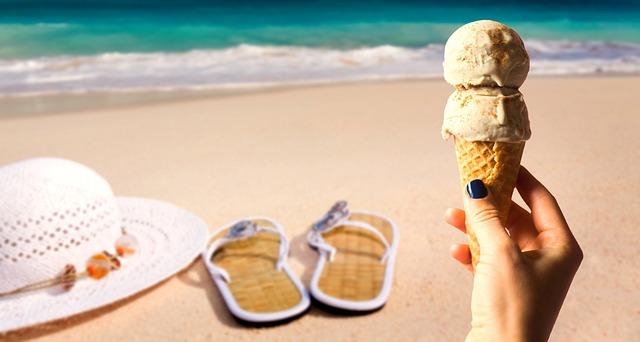How Much Ice Needed for Ice Bath: The Ice Bath Equation

Are you ready to take the plunge into the world of ice baths? Before you make the leap, let’s talk about the ice bath equation—a crucial factor that determines just how much ice you need for a refreshing dip. Whether you’re an athlete seeking recovery or a brave soul seeking an invigorating experience, understanding the science behind the ice bath equation will ensure that you get the most out of your chilling adventure. In this article, we will delve into the secrets behind the perfect ice bath, equipping you with the knowledge to achieve optimal coldness and maximize the benefits. So, brace yourself for an icy journey as we unlock the mysteries of the ice bath equation!
Contents
- 1. The Importance of Ice Baths in Physical Recovery: Accelerate Healing and Performance Enhancement
- The Ice Bath Equation: How Much Ice is Needed for an Ice Bath?
- 2. Understanding the Science Behind Ice Baths: How Cold Water Affects the Body
- 3. Determining the Ideal Temperature for Your Ice Bath: Striking the Balance Between Comfort and Effectiveness
- 4. Calculating the Right Water Volume for your Ice Bath: Achieving Optimal Coverage and Immersion
- 5. Factoring in Body Mass and Size: Personalizing the Ice Bath Equation for Maximum Benefits
- 6. Assessing Water Temperature: From Icy Plunge to Controlled Cooling
- 7. Choosing the Right Type of Ice: Crushed, Cubes, or Blocks – Which Works Best?
- 8. Timing and Duration: Finding the Sweet Spot for Maximum Recovery and Performance Gains
- 9. Post-Ice Bath Recovery Techniques: Enhancing the Benefits of Cold Therapy
- 10. Safety Precautions and Monitoring: Ensuring a Safe and Effective Ice Bath Experience
1. The Importance of Ice Baths in Physical Recovery: Accelerate Healing and Performance Enhancement
The Ice Bath Equation: How Much Ice is Needed for an Ice Bath?
An ice bath is a popular technique used by athletes and fitness enthusiasts to accelerate physical recovery and enhance performance. The cold therapy provided by ice baths can reduce inflammation, alleviate muscle soreness, and promote faster healing post-exercise. However, one common question many individuals have is how much ice is needed to create an effective ice bath.
The amount of ice required for an ice bath can vary depending on a few factors, including the size of the tub or container being used and the desired temperature of the water. To determine the ideal ice bath equation, follow these steps:
- Step 1: Measure the volume of your tub or container in liters.
- Step 2: Calculate the desired temperature reduction. For example, if you aim to reach a temperature of 10°C, and your tap water is initially at 20°C, the desired reduction would be 10 degrees.
- Step 3: Use the ice bath equation to determine the amount of ice needed: Ice (in kg) = Volume of the tub (in liters) x Desired temperature reduction (in degrees Celsius).
For instance, if you have a tub with a volume of 100 liters and want to reduce the water temperature by 10°C, the amount of ice needed would be 100kg.
2. Understanding the Science Behind Ice Baths: How Cold Water Affects the Body
When it comes to the benefits of ice baths, one might wonder how the cold water actually affects the body. It’s fascinating to explore the science behind this popular recovery technique. The exposure to cold temperatures during an ice bath triggers a series of physiological responses that can have a profound impact on our bodies.
Firstly, the cold water causes vasoconstriction, which is the narrowing of blood vessels. This constriction helps to reduce inflammation and swelling, providing relief to sore muscles or joints. Additionally, the cold temperature also decreases metabolic activity, which can help reduce muscle damage and speed up recovery time.
Furthermore, the extreme cold of an ice bath stimulates the body’s natural dive reflex. This reflex triggers a slowing down of the heart rate and a redirection of blood flow towards vital organs. This response promotes oxygenation and can enhance the body’s overall circulation. It’s important to note that while ice baths can be beneficial, it’s essential to gradually acclimate to the cold temperature and not exceed recommended exposure durations to avoid any adverse effects.
3. Determining the Ideal Temperature for Your Ice Bath: Striking the Balance Between Comfort and Effectiveness
Determining the ideal temperature for your ice bath is crucial in striking the balance between comfort and effectiveness. After all, the purpose of an ice bath is not just to endure extreme cold, but to reap the benefits it provides. Here are some key factors to consider when finding the perfect temperature for your ice bath:
1. **Know your purpose**: Different temperatures serve different purposes. For muscle recovery and reducing inflammation, a temperature of around 50-59°F (10-15°C) is recommended. If you’re aiming for improved athletic performance and reducing muscle fatigue, a colder temperature around 41-50°F (5-10°C) is ideal. It’s essential to understand your specific goal to determine the temperature that suits you best.
2. **Listen to your body**: It’s crucial to pay attention to your body’s cues when determining the temperature of your ice bath. Start with a temperature slightly cooler than what you consider comfortable and gradually adjust until you find the right balance. Keep in mind that everyone’s threshold for cold differs, so trusting your own sensations is key.
3. **Experiment and track**: Every individual is unique, so finding your ideal temperature may require some experimentation. Keep a record of how you feel and the results you experience at different temperatures. This data will help you identify patterns and make informed decisions about the temperature that works best for you.
Finding the sweet spot between comfort and effectiveness in ice baths is a personal journey. By considering your goals, listening to your body, and tracking your progress, you can strike the perfect balance and maximize the benefits of this cold therapy. Remember, the ideal temperature may differ for each person, so be patient, persistent, and adaptable in your approach.
4. Calculating the Right Water Volume for your Ice Bath: Achieving Optimal Coverage and Immersion
When preparing for an ice bath, it’s important to calculate the right water volume to achieve optimal coverage and immersion. Getting this right can make a significant difference in the effectiveness of your ice bath. But don’t worry, we’ve got you covered with the Ice Bath Equation!
To start off, you’ll need a few key measurements: the length, width, and depth of your ice bath container. With these measurements in hand, you’ll be able to determine the volume of water needed. Remember, it’s important to consider the size of your body as well, ensuring that you have enough water to fully immerse yourself.
Once you have your measurements, you can use the Ice Bath Equation to calculate the amount of ice needed. Simply multiply the volume of water by the desired temperature decrease and divide by the ice melt rate. This will give you the amount of ice required to achieve your desired icy plunge. Keep in mind that the temperature decrease and ice melt rate may vary depending on factors such as the surrounding environment and the desired therapeutic effect.
So, next time you’re gearing up for an ice bath, make sure to calculate the right water volume using the Ice Bath Equation. This will ensure that you achieve optimal coverage and immersion, maximizing the benefits of your icy adventure!
5. Factoring in Body Mass and Size: Personalizing the Ice Bath Equation for Maximum Benefits
When it comes to ice baths, one size does not fit all. Your body mass and size play a significant role in determining the optimal amount of ice needed for an effective ice bath. By personalizing the ice bath equation, you can maximize the benefits and enhance your recovery.
Here are some key factors to consider when factoring in your body mass and size:
- Surface Area: The larger your body surface area, the more heat you will lose during an ice bath. This means you will require more ice to maintain the desired temperature. Use the following formula to calculate your surface area: surface area (SA) = 0.007184 * height (cm) * weight (kg) ^ 0.425
- Body Fat Percentage: Body fat acts as an insulator, reducing the rate of heat loss. If you have a higher body fat percentage, you may need to increase the amount of ice to achieve the desired coldness. Consider adjusting the ice bath equation based on your body fat percentage.
- Water Temperature: The initial temperature of the water also affects the amount of ice needed. Warmer water will require more ice to reach the desired temperature. Aim for a water temperature between 10-15 degrees Celsius for an effective ice bath.
By factoring in your body mass, size, body fat percentage, and water temperature, you can personalize the ice bath equation to suit your individual needs. Experiment with different ice-to-water ratios to find what works best for you. Remember to monitor your body’s response and adjust accordingly. Stay cool and reap the maximum benefits of an ice bath!
6. Assessing Water Temperature: From Icy Plunge to Controlled Cooling
Ice baths are a widely used method for athletes and individuals looking to recover and rejuvenate their bodies. But have you ever wondered how much ice you actually need to create the ideal ice bath? Look no further, because we have the equation that will help you determine exactly that!
The key to an effective ice bath is achieving the perfect water temperature. This can vary depending on your goals and preferences, but generally, water temperatures between 50 to 59 degrees Fahrenheit (10 to 15 degrees Celsius) are recommended. To achieve this, you’ll need to calculate the amount of ice required for your desired temperature.
The equation is simple: for every gallon of water, you’ll need approximately 10 pounds of ice. So, if you have a standard-sized bathtub that holds 40 gallons of water, you’ll need around 400 pounds of ice. Remember, this is just a rough estimate, and it’s always better to have a little extra ice on hand to ensure the desired temperature is reached.
Additionally, it’s important to distribute the ice evenly throughout the water to achieve consistent cooling. Here are a few tips to help you create the perfect ice bath:
– Use crushed ice or ice cubes instead of large blocks to facilitate faster melting and cooling.
– Stir the water periodically to prevent warm pockets and ensure the entire bath is at the desired temperature.
– Consider using a thermometer to monitor the water temperature and make adjustments if necessary.
– Wear a swimming cap, socks, or gloves to protect sensitive areas from the extreme cold.
By following these guidelines and using the ice bath equation, you’ll be able to create an optimal recovery environment that will leave you feeling refreshed and ready to take on your next challenge. So go ahead, take the plunge into controlled cooling and reap the benefits of an invigorating ice bath!
7. Choosing the Right Type of Ice: Crushed, Cubes, or Blocks – Which Works Best?
When it comes to creating the perfect ice bath, choosing the right type of ice is crucial. Each type of ice – crushed, cubes, or blocks – has its own advantages and considerations to keep in mind.
Crushed ice is a popular choice for ice baths as it quickly cools the water and provides maximum surface area for contact with the body. This type of ice is also ideal for athletes who want quick and efficient cooling. However, it may melt faster than other types of ice, so it’s important to keep a steady supply on hand.
Cubed ice is a versatile option that can be used in a variety of applications, including ice baths. The uniform shape and size of the cubes allow for more control over water temperature. Cubes also have a slower melting rate compared to crushed ice, which means they can maintain the desired temperature for a longer period of time.
Blocks of ice are a less common choice for ice baths but can be effective in certain situations. Blocks have a slower melting rate than crushed or cubed ice, making them ideal for extended sessions or events where a consistent temperature is important. They may require more time to melt completely, so plan accordingly if using blocks of ice.
Regardless of the type of ice you choose, it’s important to consider factors such as available resources, desired water temperature, and session duration. Experimenting with different types of ice can help you determine what works best for your specific needs and preferences. Remember, the key is to maintain a temperature between 50°F-59°F (10°C-15°C) for optimal benefits from your ice bath.
8. Timing and Duration: Finding the Sweet Spot for Maximum Recovery and Performance Gains
One of the key elements in optimizing recovery and performance gains is finding the right timing and duration for your ice bath. The “Sweet Spot” refers to the perfect balance that allows your body to reap the maximum benefits of an ice bath without causing any harm or negative effects. Here are some factors to consider when determining the timing and duration of your ice bath:
Temperature: The ideal temperature for an ice bath is between 50 to 59 degrees Fahrenheit (10 to 15 degrees Celsius). This temperature range ensures that the cold water stimulates the blood vessels in your muscles, helping to reduce inflammation and accelerate the recovery process.
Timing: It is recommended to take an ice bath as soon as possible after intense physical activity or a strenuous workout. The sooner you immerse yourself in the icy water, the better your body will be able to flush out metabolic waste products and decrease inflammation.
Duration: The recommended duration for an ice bath is around 10 to 15 minutes. This timeframe allows your body enough time to cool down and experience the positive effects of the cold water without risking any potential tissue damage or discomfort.
It’s important to note that individual tolerance and preference may vary, so listening to your body is crucial. If you start to experience excessive discomfort or pain, it’s best to shorten the duration or adjust the temperature accordingly. Remember, the goal is to find the balance that works best for you and promotes optimal recovery and performance gains.
9. Post-Ice Bath Recovery Techniques: Enhancing the Benefits of Cold Therapy
After experiencing the rejuvenating effects of an ice bath, it’s natural to wonder how to enhance and maximize the benefits of cold therapy. Post-ice bath recovery techniques can play a vital role in this process, allowing you to optimize the results of your cold therapy session. Whether you’re an athlete looking to boost your performance or an individual seeking overall wellness, these techniques can help you take your ice bath experience to the next level.
1. Contrast Therapy: Alternating between cold and hot therapy can help improve blood circulation and reduce inflammation. After your ice bath, follow it up with a warm shower or soak in a hot tub for a few minutes. This alternation between cold and hot stimulates blood flow, aiding in the recovery process.
2. Active Recovery: Engaging in light exercises or stretching post-ice bath can help prevent muscle stiffness and promote recovery. Focus on low-impact activities like walking, gentle yoga, or using a foam roller to alleviate any residual muscle soreness.
3. Hydration and Nutrition: Replenishing your body with fluids and nutrients is crucial for post-ice bath recovery. Drink plenty of water or electrolyte-rich beverages to restore hydration levels. Additionally, consume a balanced meal with a combination of carbohydrates and protein to aid muscle repair.

10. Safety Precautions and Monitoring: Ensuring a Safe and Effective Ice Bath Experience
When it comes to reaping the benefits of an ice bath, safety should be your top priority. To ensure a safe and effective experience, it’s crucial to follow a set of safety precautions and monitor certain factors throughout the process. By doing so, you can maximize the benefits of your ice bath while minimizing any potential risks.
Safety Precautions:
- Always consult with a healthcare professional before attempting an ice bath, especially if you have any pre-existing medical conditions.
- Never enter an ice bath alone. Have a trusted friend or family member present to assist you if needed.
- Use a thermometer to monitor the water temperature. Ideally, your ice bath should be between 50°F and 59°F (10°C and 15°C).
- Limit your ice bath sessions to a maximum of 10 to 15 minutes to avoid overexposure.
- Start with shorter durations and gradually increase the time as your body acclimates to the cold.
Monitoring for Safety:
Throughout your ice bath, it’s important to monitor certain factors to ensure your safety:
- Pay attention to how your body feels. If you experience extreme discomfort, numbness, or any concerning symptoms, exit the ice bath immediately.
- Regularly check your body temperature using a reliable thermometer to prevent hypothermia.
- Keep an eye on your heart rate. If it becomes irregular or you feel any chest pain, stop the ice bath and seek medical attention.
- Observe any changes in your skin color or sensation. Prolonged exposure to cold temperatures can cause frostbite, so if you notice any signs, terminate the session.
Remember, ice baths can offer numerous benefits for recovery and performance, but it’s crucial to prioritize safety. By following these safety precautions and closely monitoring your body during an ice bath, you can enjoy a safe and effective experience. Stay informed, listen to your body, and always prioritize your well-being.
In conclusion, now you understand the ice bath equation and how to calculate the right amount of ice needed for your ice bath. By considering factors such as your desired temperature, the initial water temperature, and the size of your tub or container, you can ensure a refreshing and effective ice bath experience.
Remember, maintaining the ideal temperature is crucial for reaping the benefits of an ice bath. Cooling down your muscles, reducing inflammation, and boosting recovery all depend on getting the equation just right.
So, next time you feel like taking a plunge into the icy depths, confidently whip out your calculator and apply the ice bath equation. With this newfound knowledge, you’ll be able to immerse yourself in a perfect ice bath, reaping the maximum benefits for your body and mind.
Stay cool, stay rejuvenated, and keep on pushing your limits with the power of the ice bath equation!













